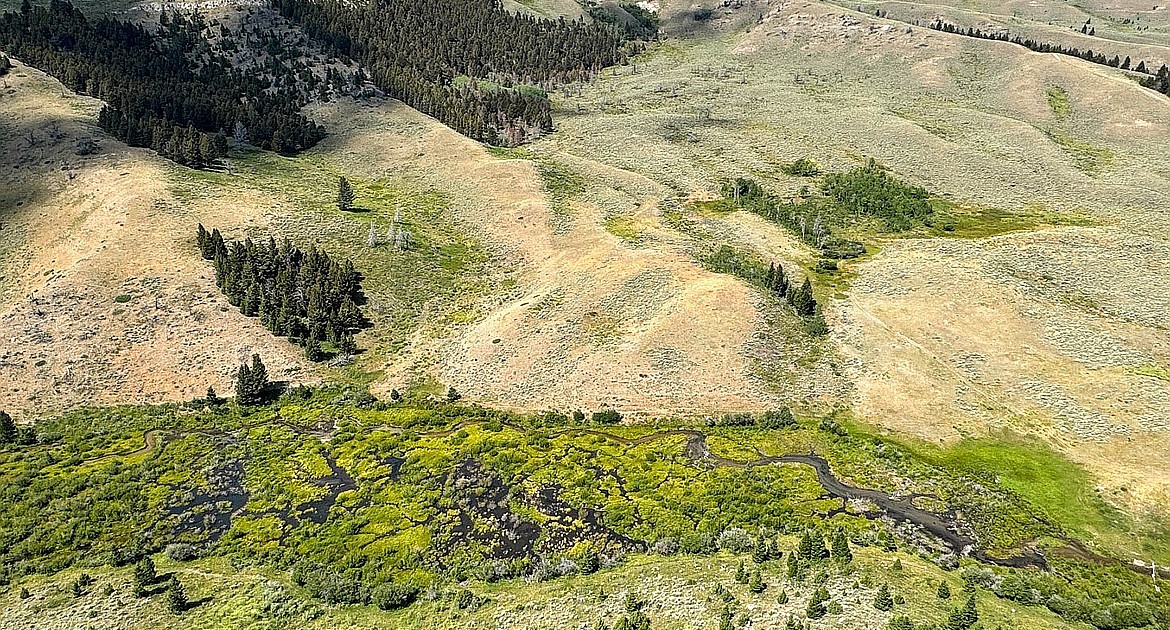Copyright Kalispell Inter Lake

Torrey Ritter may not have been born a beaver believer, but he was a quick convert. The signs were too obvious to miss, even for a young biologist just starting his career with Montana Fish, Wildlife and Parks. Tasked with surveying wildlife in southwest Montana, Ritter had to spend only a few weeks observing the local fauna before he noticed a pattern. Every time he found evidence of beavers, the overall biodiversity of the area skyrocketed. “That’s what really sparked my interest,” said Ritter. “Like, oh my God, there’s this single species. We always talk about getting away from single species management, but here is a single species where, if we manage for it, we’re getting dozens of other species on the landscape.” A decade later, Ritter is doing exactly that. As the self-affirmed “unofficial beaver guy” for Montana Fish, Wildlife and Parks, Ritter has become a leading advocate for the transformative power of beavers on the landscape. He is currently the lead on a proposal to streamline the state’s process for approving beaver transplant projects, which he hopes will clear the way for biologists across the state to directly harness the benefits of beavers for riparian restoration projects. Beavers are not just biodiversity magnets. Their dams raise local water tables and slow the movement of water across the landscape, reducing the effects of late-season droughts and increasing local wildfire resistance. Water redirected by dams often flows into historic floodplains and channels, resulting in improved flood resilience. “There’s just nothing else that does what [beavers] do,” said Ritter. “There’s no such thing as an equivalent to beaver habitat out there. It’s just entirely unique.” It’s also relatively rare. Researchers believe anywhere between 60 million and 400 million beavers inundated streams and rivers across North America before the rampant fur trade of the 1700s and 1800s slashed populations to as few as 100,000 individual beavers. The abrupt crash left many dams and lodges abandoned and unmaintained. Some were dismantled as people moved into floodplains and wetlands. Others decayed naturally. The many benefits of the dams — water storage, drought resilience, fire resistance — washed away as well. Today, an estimated 10-15 million beavers populate North America. While a substantial improvement from a century ago, Ritter said those numbers are still far below the ecological capacity. Aerial imagery taken between 2010 and 2024 revealed more than 32,000 beaver dams in Montana’s waterways, but researchers believe the state’s streams and rivers once supported hundreds of thousands, if not millions, of the log structures. In Flathead County, biologists counted 673 dams, a mere 2% of the county’s estimated 38,400-dam capacity. In some areas, land managers have used beaver dam analogs to replicate some of the hydrological benefits of beaver activity, but Ritter said the manmade structures quickly deteriorate without near-constant maintenance. They also only replicate one facet of beaver activity. While they are most famous for their dam-building prowess, beavers can shape the ecosystem by digging channels and lodges, chewing trees and moving woody debris. For Ritter, all of that leads to a simple conclusion: If you want a stream restoration job done right, it’s best to just leave it to the beavers. “I think the science backs it up really well,” he said. “This is the way to do it on a landscape scale, is to get another species to do the work for us.” THE STATE of Montana has sanctioned two largescale beaver transplant projects in the past, but Ritter said both efforts were preceded by months of permitting and paperwork. The convoluted process has long dissuaded biologists from undertaking smaller beaver transplant projects. If approved, the new transplant guidelines would transfer much of the decision-making for beaver transplant projects to regional Montana Fish, Wildlife and Parks staff. Ritter said the change would help biologists secure the necessary approvals more quickly and capitalize on the specialized knowledge of local staff. The proposed guidelines also introduce a new way for biologists to manage human-beaver conflicts. As a specialist with the Montana Beaver Conflict Resolution Program, Elissa Chott has helped hundreds of Montana landowners mitigate the less desirable impacts that beavers can have, including chewed trees, blocked culverts and flooded yards. Most complaints are solved by installing beaver-proof fencing or a pond-leveler, which uses pipes to funnel excess water through beaver dams. But Chott said those solutions don’t work for all landowners. “Everyone has a different vision for their property,” she said. “Sometimes beavers fit into that. Sometimes they don’t.” Where beavers don’t fit, the only option currently available to landowners is lethal removal. If the transplant program is approved, landowners could instead work with regional biologists to live-capture and relocate conflict-prone beavers. Chott said she was looking forward to the transplant program as “another tool in the toolbox” for landowners that may not want to live next to an active beaver colony. “[The beavers] are not being completely removed from the landscape, but [they] can be put where they’ll actually have a benefit,” she said. So far, Ritter said feedback on the project proposal has been positive. The agency received more than 100 comments on a recent environmental assessment, of which Ritter said only a few expressed negative opinions about the transplant program. He hopes the Montana Fish and Wildlife Commission will vote to adopt the program guidelines and approve a handful of pilot transplants in February 2026. The first transplants could occur as early as summer of next year.



